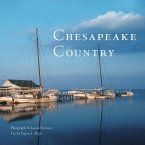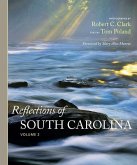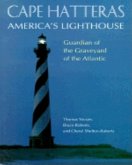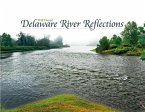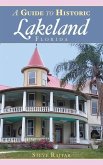A country of mists and tranquil waters harboring the nation's last commercial sailing fleet and harboring a rare abundance of wildlife: snow geese, soft-shell crabs, Canada geese, green-backed herons, white-tailed deer, great white egrets. It is a region of eight thousand miles of shoreline, dotted with such villages as Rock Hall, Poquoson, Ewell, St. Marys, Rhodes Point, and Crisfield. There is an abundance of islands, including Tangier, so isolated that Elizabethan English is still spoken on it. There are the majestic plantations, including Sotterly, Shirley, Mount Harmon, Gunston Hall, Woodlawn, as well as George Washington's Mount Vernon. Great cities also perch on the rivers of the bay: Washington on the Potomac, Baltimore on the Patapsco, Richmond on the James, Norfolk on Hampton Roads. For travelers, sightseers, and lovers of nature, Chesapeake country is the rarest of destinations: a nearby place that feels far away. It began some 15,000 years ago when the Ice Age receded. The Susquehanna River flowed all the way to the Atlantic, then flooded to become Chesapeake Bay. Stretching 185 miles from the Susquehanna to the Virginia capes, it is America's largest estuary. Here settlers celebrated the first Thanksgiving -- in 1619, one year before the Massachusetts Pilgrims celebrated theirs. Here decisive sea battles were fought during the Revolution and the War of 1812. It was here, captive on a British ship in Baltimore Harbor, that Francis Scott Key anxiously watched the bombardment of Fort McHenry and wrote "The Star-Spangled Banner". And here, during the Civil War, the ironclads Monitor and Merrimac clashed. Award-winning photographer Lucian Niemeyer and award-winningWashington Post writer Eugene L. Meyer tell the gentle, vital, and beautiful story of Chesapeake country, its waterscape and wildlife, its delicate ecology, its rich history as the seedbed of American liberty as well as American slavery, and its extraordinary present, both as the home of the watermen, who live by crabbing and oyster dredging, and as the focus of widespread gentrification by well-heeled Baltimoreans and Washingtonians with a longing to live on the bay. Chesapeake Country is a gorgeously photographed guide to this region of towns forgotten by time, of variegated wildlife, and serenely spectacular vistas, all within an easy drive from the Atlantic seaboard's megalopolis. For those who live on the Chesapeake, it is a celebration. For those who do not, it is an invitation to explore. For everyone it is a journey of discovery.
Bitte wählen Sie Ihr Anliegen aus.
Rechnungen
Retourenschein anfordern
Bestellstatus
Storno


